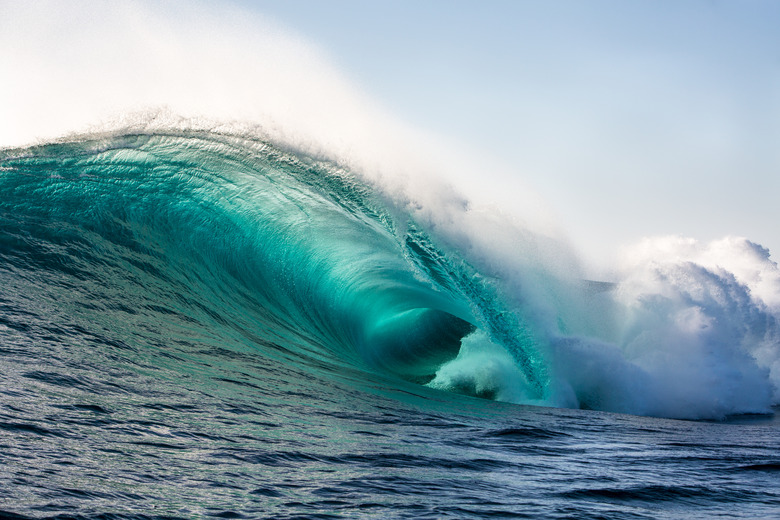The Advantages & Disadvantages Of OTEC
Ocean thermal energy conversion (OTEC) is a source of renewable energy wherein the temperature differential between deeper, colder water and warmer, shallow water is used to run a heat energy engine and produce electricity. The greater the temperature differential, the higher the efficiency of the heat engine. Consequently, this technology is thought to be most effective in the tropics, where the differential between deep water and surface water is the highest. OTEC has the potential to produce energy 10 to 100 times more efficiently than wave power.
Advantage: Renewable and Clean
Advantage: Renewable and Clean
OTEC technology feeds off an unchanging condition, the solar energy stored in the world's oceans. Therefore it can run virtually continuously, unlike other renewable energy sources such as solar and wind power. On an average day, the world's oceans absorb an amount of energy equivalent to 250 million barrels of oil, approximately 4,000 times the population's current energy needs. Once the generators and water pipes are in place, only minimal upkeep is required to keep the flow of electricity running and no harmful byproducts result from the process.
Advantage: Spin-off Industries
Advantage: Spin-off Industries
OTEC can also support numerous spin-off industries. Chilled water that has already been used can be pumped out of the plant and used in air conditioning, industrial cooling and chill-soil agriculture (where pipes containing chilled water are used to chill soil so it can support temperate crops in tropical climates). Additionally, desalinized water can be produced through OTEC systems by implementing surface condensers to turn evaporated seawater into potable (fresh) water. A 2-megawatt plant, for instance, could produce about 4,300 cubic meters of potable water.
Disadvantage: Cost
Disadvantage: Cost
At present, government subsidies are required to make OTEC energy economically viable. Electricity can be produced at about $0.07 per kilowatt-hour, as opposed to subsidized wind power systems that can produce energy for as low as $0.05 per kilowatt-hour. Moreover, OTEC requires expensive, large-diameter pipes submerged about a mile below the ocean's surface. Many of the countries within the viable geographical belt (between the Tropic of Cancer and Tropic of Capricorn) lack the economic resources to build this infrastructure.
Disadvantage: Political Concerns
Disadvantage: Political Concerns
Because OTEC facilities are stationary surface platforms, they are essentially considered artificial islands and, therefore, their exact location affects their legal status under the United Nations Convention on the Law of the Sea treaty (UNCLOS). According to UNCLOS, coastal nations are given 3-, 12- and 200-mile zones of varying legal authority. The amount of political autonomy among these zones varies greatly. Consequently, jurisdictional conflicts could arise based on international boundary disputes between nations.
Cite This Article
MLA
Kwak, Patrick Stothers. "The Advantages & Disadvantages Of OTEC" sciencing.com, https://www.sciencing.com/advantages-disadvantages-otec-8495395/. 13 March 2018.
APA
Kwak, Patrick Stothers. (2018, March 13). The Advantages & Disadvantages Of OTEC. sciencing.com. Retrieved from https://www.sciencing.com/advantages-disadvantages-otec-8495395/
Chicago
Kwak, Patrick Stothers. The Advantages & Disadvantages Of OTEC last modified March 24, 2022. https://www.sciencing.com/advantages-disadvantages-otec-8495395/
